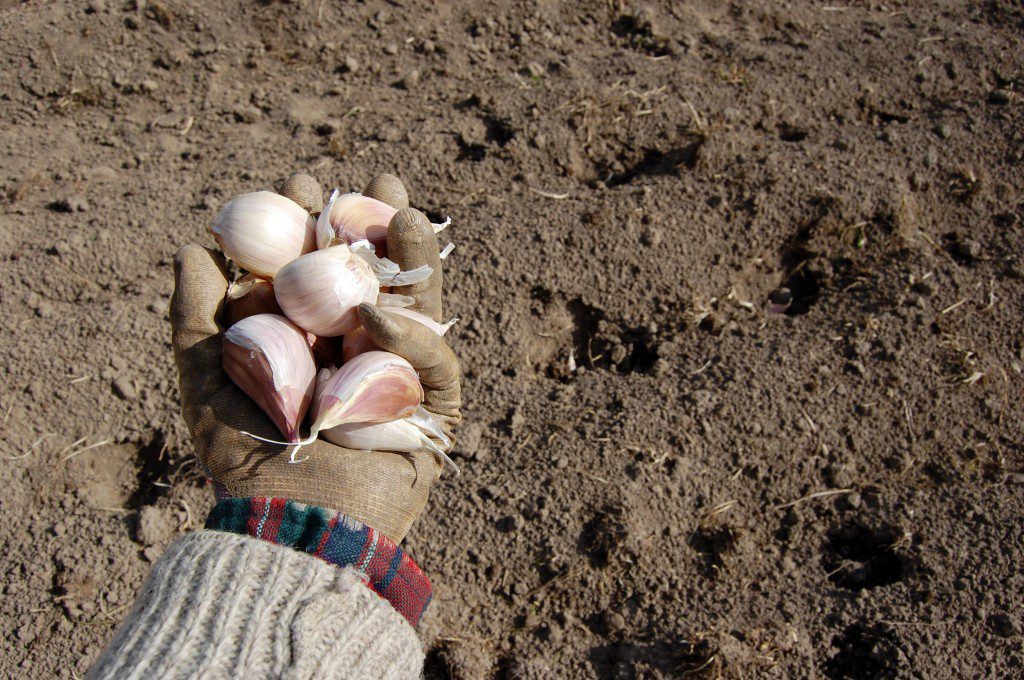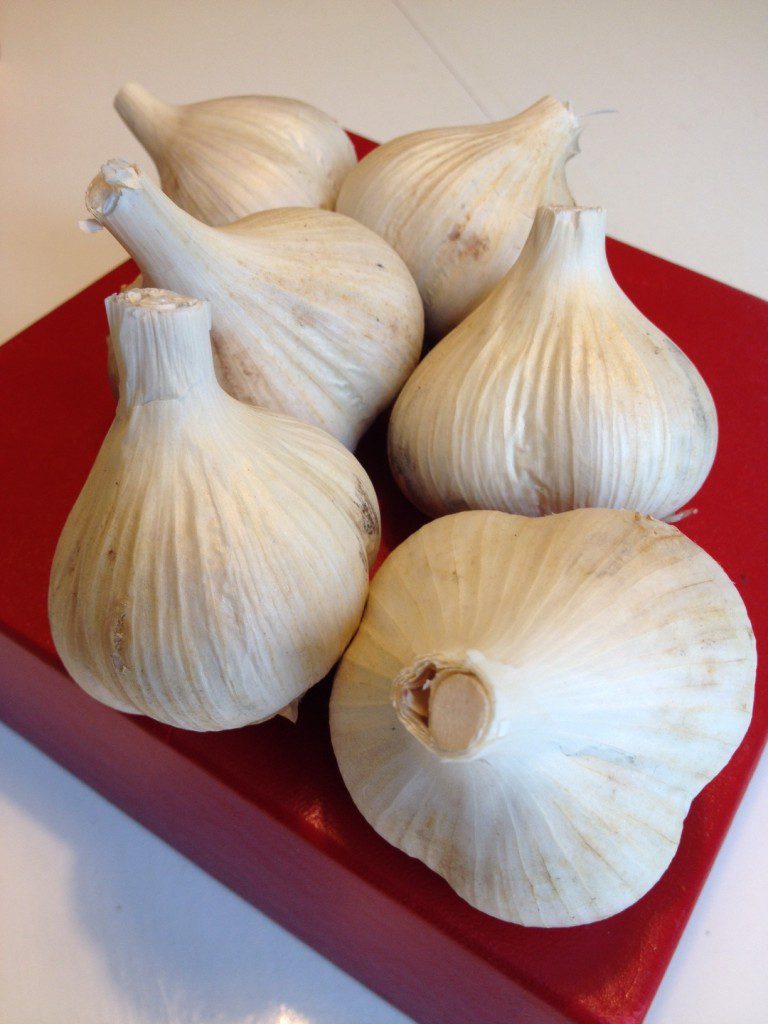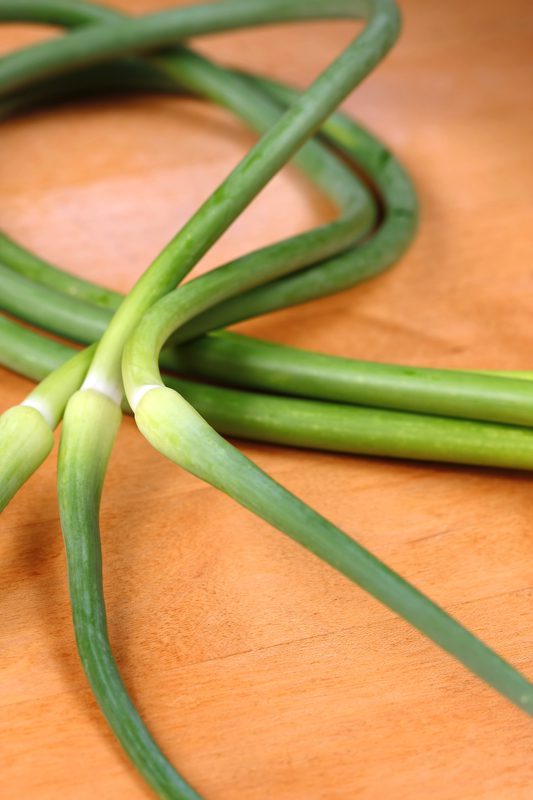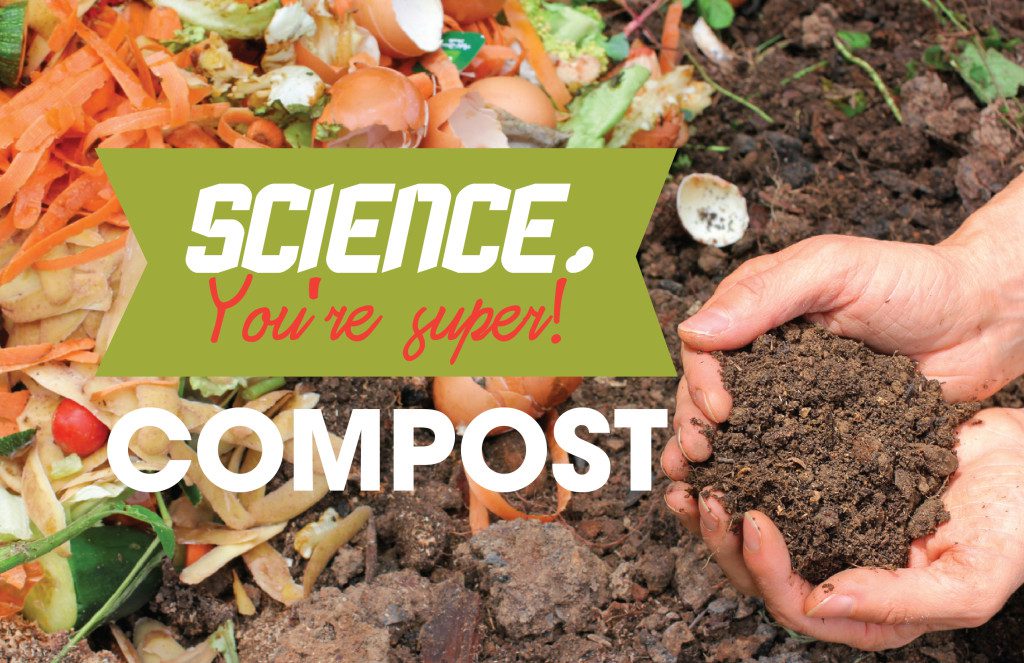Science, You’re Super : Garlic!
The “Science, You’re Super!” segment is a regular feature in Inspire(d) Magazine… we bring you this seasonally appropriate feature on Garlic!
Garlic sure has been purported to have a lot of uses: it can apparently cure the common cold, prevent heart disease, and keep vampires away. All I know for sure is it can make my food DELICIOUS! I love crushing fresh cloves with the flat of my knife and mincing them into most all of my savory dishes. So it’s handy we inherited a pretty large patch of German Extra Hardy garlic when we moved into our house several years ago (thanks, Rhodes’!). Every summer, we pick out the biggest heads out of the harvest – and there are some giant ones – to be planted that fall, and every year, without fail, I marvel over the fact that one little clove turns back into a whole head garlic. Magic! Science!
Interesting garlic facts: China definitely wins the garlic growing contest, with approximately 23 billion pounds grown there annually – that’s more than 77 percent of world output! The United States (where garlic is grown in almost every state) is in sixth place with a sad 1.4 percent of the world’s production. And most of THAT is grown in Gilroy, California, the “Garlic Capitol of the World” (they might need to rethink that title…)(1)

Garlic is generally propagated by planting cloves, which are the small sections that are broken out of the whole head. Each large garlic bulb, or head, contains about 10 cloves, depending on variety. The bigger the cloves you plant, the larger the cloves and heads you get at harvest. (2)
It’s time to harvest when the tips of the leaves become partly dry and bend to the ground. The bulbs are gently pulled and gathered to dry (or cure) for about a week. (2)
But how, exactly, does that head of garlic form? We turned to Seed Technician Heidi Cook at the world-renowned, but local-to-us Seed Savers Heritage Farm for some answers.
How does that one clove of garlic magically become a whole head of garlic under ground?
Within each clove of garlic a leaf begins to form even before planting. At the base of this leaf, tiny cloves begin to develop and in spring they continue to grow or swell around the stalk. Essentially each clove is but a tiny garlic plant. It is a common misconception that the bulbs form cloves later in the season but they actually begin to form even before planting.
I read that garlic actually does better when it’s planted close together? Is this true? If yes, why?

Planting garlic cloves 6 to 8 inches apart, depending on the variety, can allow the bulbs to grow to a desired size and aid in the care they need to be given, from the gardener, as they grow. Having a layer of mulch on the beds will help in the spring and summer for suppressing weeds. A weedy bed of garlic will result in an undesirable harvest as garlic does not compete well with the weeds.
Why does garlic need to be exposed to colder temps in order to form bulbs in the spring?
Garlic should be planted roughly four to six weeks before the ground freezes. This allows the garlic cloves to develop a good root system and yet not enough time to send up leaves. If leaves emerge before winter it can damage the plant so waiting until October to put your cloves in the ground would be a fine recommendation. The soil around the garlic cloves and a good layer of mulch over your planting will allow protection from cold winter temperatures. The period of cold over winter is ideal for encouraging a better flavor for the garlic.
What’s the difference between hardneck and softneck garlic? What works in the Midwest?
The Midwest can be an ideal area to grow large, vigorous, and tasty cloves of garlic. Garlic is divided into two main types by how they grow. Hardnecks varieties are directly related to wild garlic and are especially hardy in this area. These send up flower stalks in the spring which are more commonly called scapes. Breaking off these scapes as they begin to curl will allow the energy to be directed below ground and at harvest time the bulbs will be larger.
Softnecks are varieties of hard necks that developed later. In our climate, soft necks generally do not send up a flower stalk so the energy to produce the bulbs is continuously directed to creating larger cloves of garlic. They have become the most commonly grown varieties on the market as they are known for their longer shelf life, bulb size and more distinct hot or mild flavor.
What do YOU love about garlic?
Garlic is a very easy and satisfying plant to grow. It requires little maintenance and at harvest time it gives a great reward. It can be an extension of off-season garden work for an avid gardener giving the grower one last shot before winter to work in the garden and an early harvest reward for the following year. There are many different varieties all unique in flavor and use. I like the hardneck varieties because the scapes are yet another tasty addition to my garden.
Seed Savers Exchange offers a nifty pictorial guide to growing garlic – they also sell over a dozen varieties of garlic (they all taste amazingly different!), but supllies often sell out quickly. Start checking by early July and plant in late fall for a summer harvest!
Sources:
- en.wikipedia.org/wiki/Garlic
- www.plantanswers.com/garden_column/oct03/2.htm
- Heidi Cook, Seed Savers Heritage Farm seed technician
Aryn Henning Nichols loves garlic. She is lucky Benji Nichols loves garlic… for a variety of reasons.














